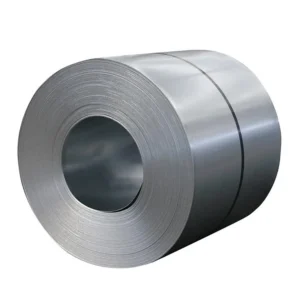How Electrical Steel Powers Modern Industry: Applications, Benefits, and Innovations
In today’s energy-driven world, electrical steel plays a crucial role in shaping the performance and efficiency of modern electrical systems. As industries across the globe aim to reduce energy consumption and improve power efficiency, electrical steel has become an indispensable material for manufacturing components that rely on magnetic fields, particularly in transformers, motors, and generators.
Electrical steel, also known as silicon steel or lamination steel, is an alloy that exhibits superior magnetic properties, low core loss, and high permeability. These characteristics make it ideal for transforming electrical energy with minimal energy loss. There are primarily two types of electrical steel: grain-oriented electrical steel (GOES) and non-grain-oriented electrical steel (NGOES). Each serves specific functions depending on the application requirements.
Types of Electrical Steel and Their Applications
Grain-oriented electrical steel is primarily used in the cores of power and distribution transformers. Its grain structure is aligned during manufacturing, enabling it to conduct magnetic fields efficiently in a specific direction. This significantly reduces core losses and improves transformer performance.
On the other hand, non-grain-oriented electrical steel is used in rotating machines such as motors, generators, and ballasts. Since the magnetic flux in these devices moves in multiple directions, NGOES, which has uniform magnetic properties in all directions, becomes the optimal choice.
The importance of selecting the right type of electrical steel cannot be overstated. It directly impacts the efficiency of the device, influencing not only energy savings but also noise levels, operational temperature, and lifespan.
Advantages of Using Electrical Steel
One of the key advantages of electrical steel is its ability to reduce hysteresis and eddy current losses, both of which contribute to energy inefficiencies in electromagnetic devices. Manufacturers often apply insulation coatings to each lamination to further reduce eddy current losses and enhance overall magnetic performance.
Moreover, electrical steel contributes to the compactness and lightweight nature of modern machinery. With better magnetic performance, engineers can design smaller, more efficient motors and transformers without compromising on power output or durability.
In the automotive industry, especially in electric vehicles (EVs), electrical steel is increasingly being used to improve the performance of drive motors. It helps manufacturers meet stringent energy efficiency and emissions standards while delivering optimal power.
Global Market Trends and Innovations
The demand for electrical steel is rapidly growing, driven by the expansion of renewable energy, electric mobility, and smart grid systems. Countries across Europe and the Middle East are investing in upgrading their energy infrastructure, which requires high-performance transformers and motors.
Technological advancements have also led to the development of high-grade electrical steels that offer even lower core loss and improved performance at higher frequencies. This is particularly relevant for high-speed motors and next-generation electronics, where conventional materials fall short.
Several manufacturers are now exploring laser scribing and domain refinement technologies to further improve the performance of grain-oriented steels. These innovations help in achieving tighter magnetic flux control, which translates to higher efficiency and reduced noise in transformers.
Sustainability and Future Outlook
As sustainability becomes a global priority, the use of electrical steel is set to rise. It enables the design of greener, more energy-efficient systems, thereby helping reduce the carbon footprint of industrial operations. Furthermore, recycling electrical steel is both feasible and beneficial, as it maintains most of its magnetic properties even after reprocessing.
Looking ahead, the synergy between material science and electrical engineering will continue to drive the evolution of electrical steel. From power grids to EVs and smart home appliances, its role will only expand in shaping the next generation of energy systems.
Conclusion
Electrical steel is no longer just a specialty material; it is a strategic enabler of energy efficiency, system reliability, and sustainable industrial growth. As industries in Europe, the Middle East, and around the world seek to optimize performance and minimize energy loss, electrical steel stands out as a critical material in the transformation of global energy systems.




